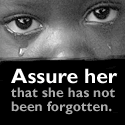I have long been interested in the ‘simple’ life and those who live that life, including the Shakers and the Amish. ‘The Seeker ’ by Ann H. Gabhart is set in a Shaker community in Kentucky during the U.S. Civil War.
’ by Ann H. Gabhart is set in a Shaker community in Kentucky during the U.S. Civil War.
Here is the synopsis of this book:
Charlotte Vance is a young woman who knows what she wants. But when the man she planned to marry joins the Shakers – a religious group that does not allow marriage – she is left dumbfounded. And when her father brings home a new wife who is young enough to be Charlotte’s sister, it is more than she can bear. With the country – and her own household – on the brink of civil war, this pampered gentlewoman hatches a plan to avoid her new stepmother and win back her man by joining the Shaker community at Harmony Hill. Little does she know that this decision will lead her down a road of unforeseen consequences.
Ann H. Gabhart brings alive the strikingly different worlds of the Southern gentry, the simple Shakers, and the ravages of war in 1860s Kentucky to weave a touching story of love, freedom, and forgiveness.
Here is the biography of the author:
Ann H. Gabhart and her husband live on a farm just over the hill from where she grew up in central Kentucky. They live just thirty miles from a restored Shaker village in Kentucky. Ann has walked the same paths that her characters might have walked in generations past. She’s active in her country church, and her husband sings bass in a Southern Gospel quartet. Her first inspirational novel, The Scent of Lilacs , was one of Booklist’s top ten inspirational novel of 2006. Gabhart is the author of several books, including the bestselling The Outsider
, was one of Booklist’s top ten inspirational novel of 2006. Gabhart is the author of several books, including the bestselling The Outsider , a finalist for the 2009 Christian Book Awards in the fiction category, and The Believer
, a finalist for the 2009 Christian Book Awards in the fiction category, and The Believer .
.
Here is a video of the Shaker standard tune called ‘Simple Gifts,’ one of my favorite songs, as performed by Alison Krauss (one of my favorite musicians) and Yo-Yo Ma. Please be prepared for some goose bumps!:
Ann shares some information in ‘A Note About the Shakers:’
American Shakerism originated in England in the eighteenth century. Its leader, a charismatic woman named Ann Lee, was believed by followers to be the second coming of Christ in female form. After being persecuted for those beliefs in England, she and a small band of followers came to America in 1774 to settle in Watervliet, New York, and there established the first community of the United Society of Believers in Christ’s Second Appearing, more commonly known as Shakers.
When religious fervor swept the Western frontier at the turn of the nineteenth century, the Shakers, whose communities in New England were flourishing, found the spiritual atmosphere in Kentucky perfect for expanding their religion to the west. By the middle of the nineteenth century the Shakers had nineteen communities spread through the New England states and Kentucky, Ohio, and Indiana.
The Shaker doctrines of celibacy, communal living, and the belief that perfection could be attained in this life were all based on revelations that Mother Ann claimed to have divinely received. The name Shakers came from the way they worshiped. At times when a member received the “spirit,” he or she would begin shaking all over. These sorts of “gifts of the spirit,” along with other spiritual manifestations such as visions, were considered by the Shakers to be confirmation of the same direct communication with God they believed their Mother Ann had experienced.…
In Kentucky, the Shaker villages of Pleasant Hill and South Union have been restored and attract many visitors curious about the Shaker lifestyle. These historical sites provide a unique look at the austere beauty of the Shakers’ craftsmanship. The sect’s songs and strange worship echo in the impressive architecture of their buildings. Visitors also learn about the Shakers’ innovative ideas in agriculture and industry that improved life not only in their own communities but also in the “world” they were so determined to shut away. (pp. 7-8)
One of the things that brings fame to the Shakers are their staircases, which seem to defy the laws of gravity.
Charlotte’s life was in a state of upheaval at the beginning of the book – her betrothed decided to join the Shakers, who prohibit marriage, and her father came home with a new wife, Selena, who was only a few years older than her.
A new acquaintance who was a little more positive for Charlotte was Adam Wade, an artist who was going to paint a portrait of the new Mrs. Hunt:
“Oh no. I fear I am just a hired artisan.” The man laughed out loud and bowed at the waist toward Charlotte. “Adam Wade at your service, Miss Vance.”
“And for what purpose have you been hired, if I may be so bold to ask? A cupola here in my mother’s garden?”
“Perhaps artisan is not the proper word. Artist. Although my grandfather’s practical side shudders every time I claim the title. But that is what I am. An artist. A curse I fear I was born with. And I have been commissioned – or a better word might be coerced – to paint a wedding portrait of the lovely Mrs. Vance.”
“Coerced? By whom? Our Selena?” She carefully emphasized the last two words.
“Oh, no.” He laughed again. Easily, without inhibition. “I barely know the woman.”
“Neither does my father.”
“You have a point, but not one, I am relieved to say, that can poke me. My sister, Phoebe, knew our Selena back home in Boston, and she is the one whose coercion I cannot ignore. Not and maintain any sort of familial peace.” (p. 21)
In addition to his portrait work, he knew he could get some other work done:
Adam rubbed his fingertips and thumb together in anticipation at the thought of the Shakers. Their village just a few miles from where he stood in the senator’s garden – another reason he was not sorry to be in Mercer County. Sam Johnson, the editor at Harper’s Weekly, was eager to see sketches of their buildings and the graceful winding staircases that so amazed all visitors.
While Adam was ready to supply whatever illustrations the editor requested, he was more curious about the particular people who would choose such a life. Men and women who had turned against all that was natural between a man and woman as if they believed the Lord had changed his mind about his initial command to Adam and Eve to be fruitful and multiply. (p. 33)
Another important theme in this book is the practice of slavery:
The word slave never crossed her mother’s lips. Those who did her bidding and kept Grayson running were their people. But Charlotte knew the word from her father and from Aunt Tish [one of their slaves] and from Willis, the gentle black man who brought her pony out to her and taught her how to ride. Still, she was going on ten before she understood, really understood, what being a slave meant. (p. 39)
Adam was given the opportunity to visit the Shaker community. He was taken aback by what he saw:
Adam glanced up at the sun straight over his head. The bell had evidently summoned them to their midday meal. He slid off his horse and held the reins while he pulled out his sketchpad. They were all as alike as ants trailing into an anthill as they filed past him. The women wore white caps and large white collars lapping over their bosoms to tuck down in their aprons, covering their plain dresses. The men wore straw hats with wide brims and suspenders to hold their butternut brown or gray pants. (p. 63)
Sister Martha, one of the Shakers, became very attached to Sister Charlotte. She explained some of their practices and beliefs to Charlotte:
“Is that what they’re doing? Dancing down glory?” Charlotte asked.
“I suppose that sounds strange to you,” Sister Martha answered with a gentle smile. “Never fear, you will learn your ways. But first you must free yourselves from thoughts of the world. Whatever worries you had there are no longer important. You have left that life for a better life here with us where there is only peace and harmony.”
Peace and harmony. Charlotte wondered if such was even possible with the nation split and shots fired at Fort Sumter. The news received at the Shaker village since then didn’t hold out much hope for peace with the threats of blockades of the Southern ports and the call to arms by both sides. The situation seemed to be totally out of control. The same as Charlotte’s life.
A few days ago it seemed reasonable to follow Edwin to the Shaker village to convince him he was wrong to be a Shaker. A few days ago she had believed she would be able to hang on to Grayson. To go home again and sit in the peace of Aunt Tish’s kitchen. Her kitchen.
But now she was sitting in a church without an altar, watching men and women whirl until they collapsed from the effort, eating imaginary fruit while people watched from peepholes to be sure she was obedient. Reason was lost. (pp. 163-164)
I was interested in Adam’s interpretation of the Shakers’ lifestyle to stay separated from the world:
It seemed a strange life. Everything so ordered and serene. Elder Logan claimed all strife had been removed for those who dwelt there, but how could one live in a tranquil sea day in and day out? A man needed the water of his life stirred by breezes. Else he stayed in the doldrums and wasted away for lack of challenge. And yet here were all of these men and women seeking those doldrums. It was more than Adam could understand. And certainly nothing he could ever want. (p. 216)
Being that this story is set in 1861 and 1862, during the U.S. Civic War, there are a lot of war scenes. Truth be told, I am not necessarily interested in war scenes, and was more interested in the Shaker lifestyle scenes.
I was a little saddened by how dour the Shakers’ world was:
When Dulcie noticed her lifting a pink rose close to her face to catch its sweet fragrance, she warned her. “We are not to smell the roses, Sister Charlotte. It slows the progress of filling our baskets.”
“But the fragrance brings peace to my spirit, and aren’t we all to seek such peace?”
“Sister Altha would tell you such peace is found through prayer and laboring of our songs in meeting. Not in shirking the proper performance of your duties.” (p. 257)
It was interesting that both Charlotte and Adam became closer to the Lord, even amidst people who have an incorrect and non-biblical worldview. It proves that the Lord can reach people in many diverse ways.
Ann has increased my interest in the Shaker lifestyle. There are lots of places in Kentucky I want to visit, and Pleasant Hill, which is only about a six hour drive from our Metro Detroit home, is one of them. I thank Ann for increasing my awareness of this interesting sect in this book.
You can order this book here .
.
Available July 2010 at your favorite bookseller from Revell, a division of Baker Publishing Group. This book was provided by Revell for review purposes.





























.jpg)







1 comment:
What a beautiful review, Andrea. If I wasn't the author and hadn't already read it over a dozen or two times, I might be convinced to go out and find the book. :-) You presented the ideas of the book so well with the excerpts and your comments. Thank you so much.
Post a Comment